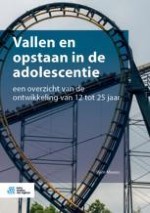Samenvatting
Bij adolescent probleemgedrag wordt onderscheid gemaakt tussen internaliserende en externaliserende problemen. Internaliseren verwijst naar kwetsbaarheid voor stemmingsstoornissen, zoals depressie en angst, terwijl externaliseren kwetsbaarheid voor antisociaal gedrag aangeeft, zoals delinquentie, agressie en druggebruik. Verschillende theorieën over depressie, angst, delinquentie en druggebruik worden besproken. Onderzoek laat zien dat in de adolescentie angst, met uitzondering van gegeneraliseerde angst, afneemt en dat depressie toeneemt. Directe agressie neemt af, delinquentie piekt in de middenadolescentie en neemt daarna af, en druggebruik neemt tot de postadolescentie toe. Individuele verschillen in angst, depressie en delinquentie worden sterker in de adolescentie. De meeste jongeren groeien in de adolescentie over hun problemen heen, maar dat geldt niet voor 10 tot 15 % van hen. Gemiddeld groeien adolescenten vaker over externaliserend probleemgedrag heen dan over internaliserend probleemgedrag. Adolescenten met probleemgedrag vertonen ook op andere gebieden een problematische ontwikkeling. Dat geldt voor identiteit, persoonlijkheid en persoonlijke relaties.
